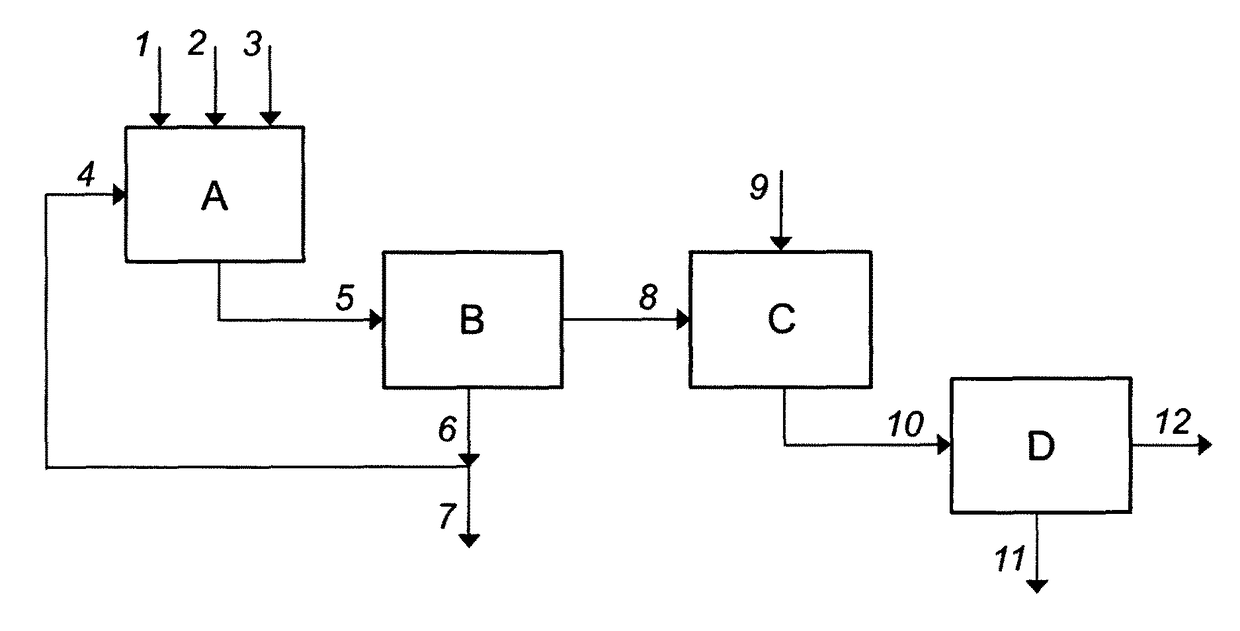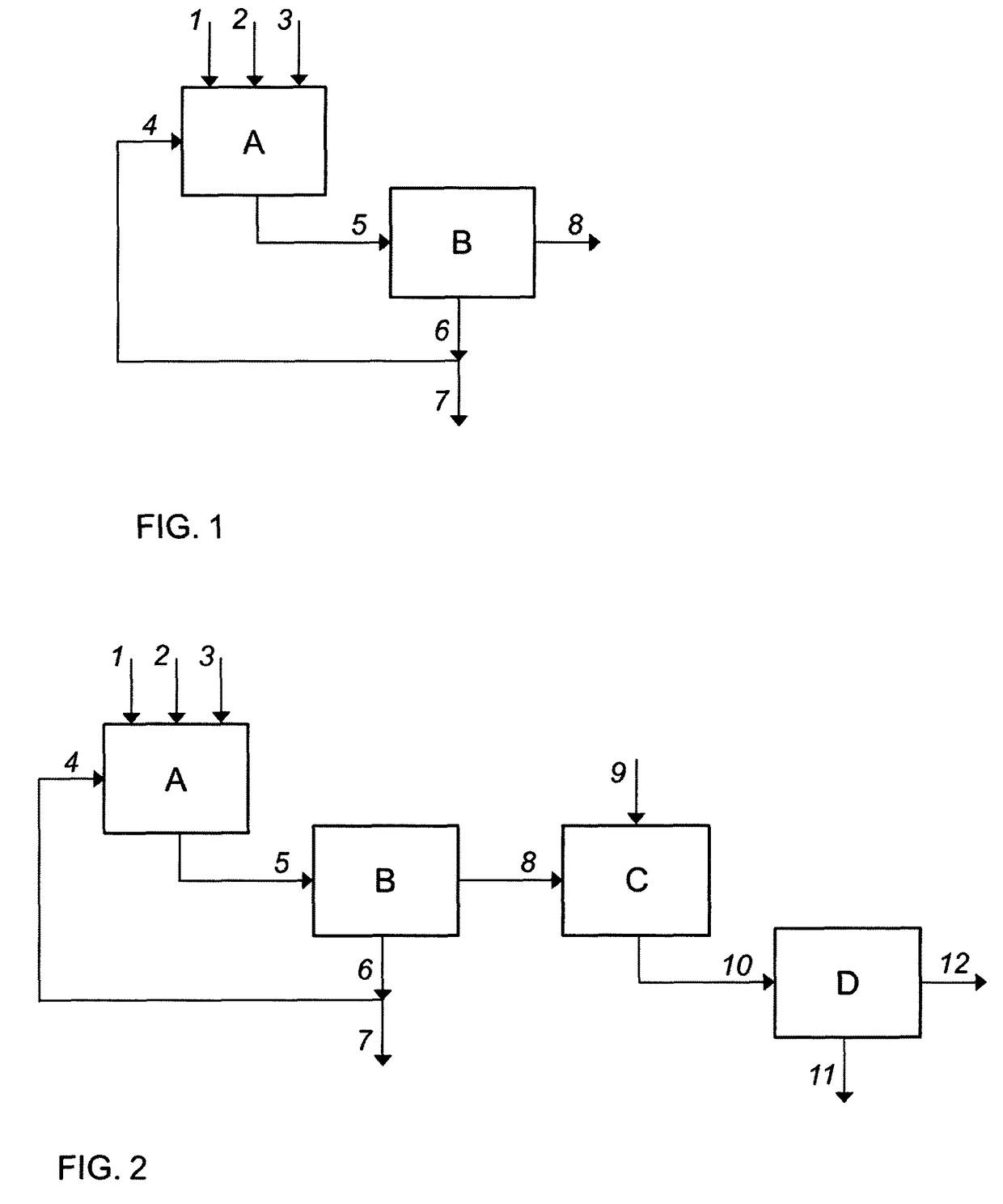Method for leaching recovery-boiler ash
a technology of boiler ash and leaching method, which is applied in the field of leaching of ash, can solve the problems of increasing the problem of h2so4 as an additive in the leaching process, the effect of reducing or eliminating the addition of h2so4 and high effective pri
- Summary
- Abstract
- Description
- Claims
- Application Information
AI Technical Summary
Benefits of technology
Problems solved by technology
Method used
Image
Examples
example
[0038]About 40% of the ash from the recovery boiler of a certain pulp mill, corresponding to about 55 kg of ash per air-dried ton (ADt) of pulp, is subjected to a single-stage leaching process. The carbonate content of the ash is around 10%. About 5 kg of burnt lime (CaO) per ADt of pulp, taken from the calcium cycle of the mill, is added to the leaching vessel before or during the leaching treatment. In the case of the corresponding conventional ash-leaching process, about 4.4 kg of H2SO4 per ADt would have been added to the leaching vessel.
[0039]After the leaching treatment, solids are separated from the slurry in a straightforward manner. The liquid fraction remaining is utilized in the bleaching line of the mill. The solids fraction is led to a dissolving vessel where sodium and potassium compounds are dissolved in water. Calcium compounds remain, to a large extent, un-dissolved. Calcium compounds are separated out and returned to the calcium cycle of the mill, while the aqueous...
PUM
| Property | Measurement | Unit |
|---|---|---|
| mass ratio | aaaaa | aaaaa |
| temperature | aaaaa | aaaaa |
| liquid-fraction | aaaaa | aaaaa |
Abstract
Description
Claims
Application Information
 Login to View More
Login to View More - R&D
- Intellectual Property
- Life Sciences
- Materials
- Tech Scout
- Unparalleled Data Quality
- Higher Quality Content
- 60% Fewer Hallucinations
Browse by: Latest US Patents, China's latest patents, Technical Efficacy Thesaurus, Application Domain, Technology Topic, Popular Technical Reports.
© 2025 PatSnap. All rights reserved.Legal|Privacy policy|Modern Slavery Act Transparency Statement|Sitemap|About US| Contact US: help@patsnap.com



